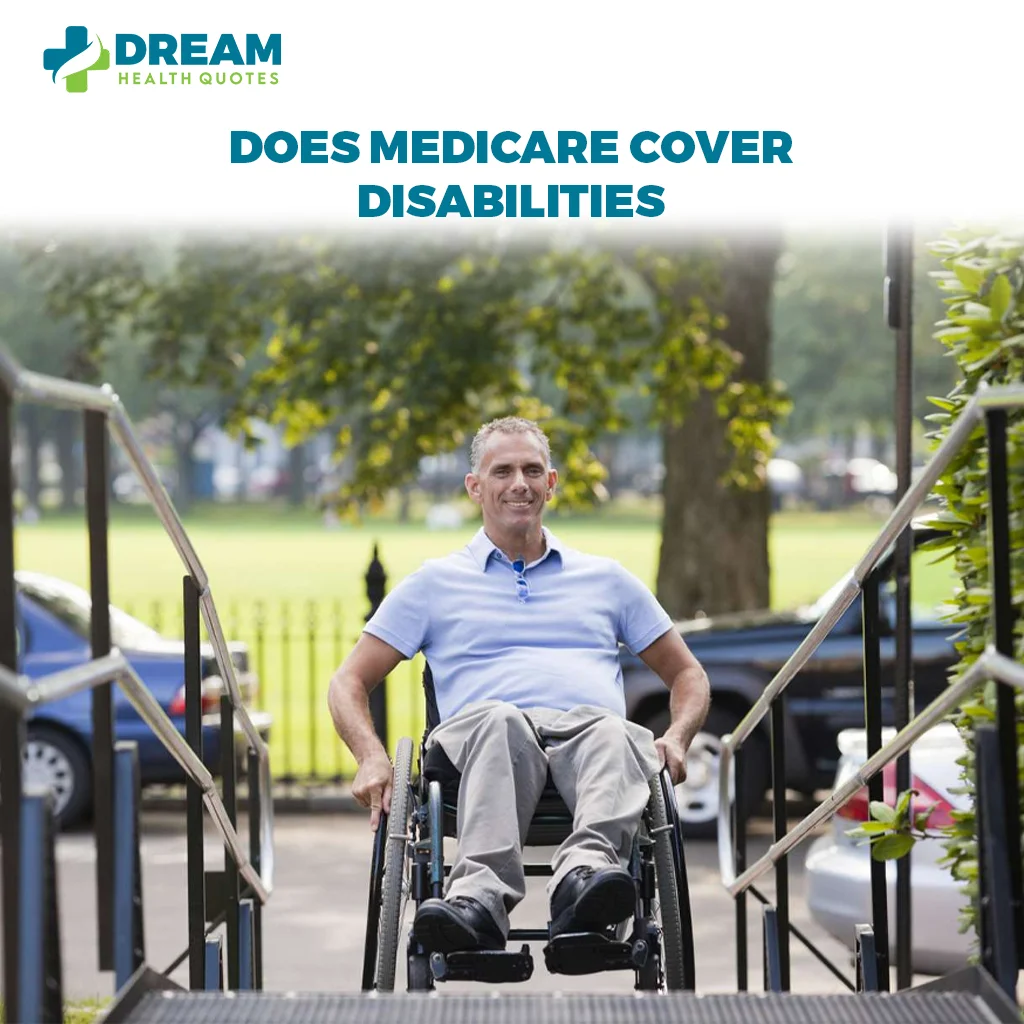Learn more about your Medicare options with the aid of DreamHealth.
It’s possible that you’ll already be eligible for Medicare if you’re eligible for disability insurance. You will receive the benefits you are entitled to, thanks to our assurance. No commitment is necessary to sign up.


Medicare Disability Insurance
Does Medicare provide coverage for Disabilities?
Medicare disability coverage may be available to you if you are disabled, regardless of age, and are eligible for SSDI.
What steps are involved in getting Medicare for people with disabilities?
Take into account the following actions to receive both SSDI and Medicare disability coverage:
-Step 1
Submit a Social Security Disability application
You must fulfill the following criteria in order to be eligible for Social Security disability benefits:
- Diagnosed with an illness that has rendered you permanently disabled, preventing you from working for a year or more.
- Have paid Social Security taxes and had a job that qualifies for Social Security.
- Your age, education level, or physical limitations must have prevented you from finding a suitable substitute position or new field of work, and your medical condition must prevent you from fulfilling your typical job function.
- You must adhere to the course of therapy prescribed by your physician for your condition.
You can apply for Social Security disability through the Social Security Administration at https://www.ssa.gov/.
-Step 2
Obtain Medicare Disability Insurance
Most people must have been receiving Social Security disability payments for at least two years (24 months) to start receiving Medicare disability benefits, however some may be eligible earlier. Here is a look at eligibility on a case-by-case basis:
- if you have Lou Gehrig’s disease, often known as ALS, or amyotrophic lateral sclerosis.
- In the first month after you start receiving Social Security disability benefits, you are automatically enrolled in Medicare Part A (hospital insurance).
- If you reside within one of the 50 United States or the District of Columbia, you are immediately enrolled in Medicare Part B (medical insurance). If you already have health insurance, you can opt out of Medicare Part B’s automatic enrollment.
- To help with prescription medication costs, you have the choice to sign up for a Medicare Part D prescription drug plan.
- Following at least two years (24 months) of Social Security disability benefits, you will:
- At the start of the 25th month following the day you initially earned your Social Security disability payments, you will automatically be enrolled in Medicare Part A.
- At the start of the 25th month following the day you initially earned your Social Security disability payments, you will automatically be enrolled in Medicare Part B.
- You might also decide to sign up for a Medicare Part D prescription drug plan to help pay for your prescription drug expenses. As early as three months before the 25th month of your Social Security disability benefits, you can sign up for a Medicare prescription medication plan.
- If you have kidney failure or end-stage renal disease (ESRD):
- You must manually enroll in all Medicare coverage by visiting https://www.ssa.gov/benefits/medicare/ or calling 1-800-772-1213 (TTY users 1-800-0778), Monday through Friday, from 7 AM to 7 PM. If you want to sign up for Medicare Parts A and B, you can also go to your neighborhood Social Security office.
- Living outside the District of Columbia and the 50 United States:
- If you do not reside in the District of Columbia or the 50 United States, but do reside in a U.S. territory (such as Puerto Rico), any qualified automatic enrollment will be limited to Medicare Part A (hospital insurance), and you must enroll yourself for Part B and a Medicare prescription drug plan when you become eligible.
Important Information Regarding Premium Prices and Other Costs
- For the majority of people, Original Medicare Part A is free, and you must keep it. Even if you are covered by your spouse’s employer insurance, you will probably need to keep Part A because you cannot decline it unless you’re willing to repay all of the SSDI benefits you have already received.
- You can opt out of Original Medicare Part B if you have other health insurance coverage through your employer or your spouse’s employer, and it has a monthly premium.
Important: There are variations depending on the number of employees, so be careful to inquire with the employer’s human resources department to learn how their plan interacts with Original Medicare Part B. If there are 20 or more employees, the employer insurance will take precedence (i.e., it will be billed first and likely pay for more of your care than Medicare Part B). If there are fewer than 20 employees, your Medicare insurance will take precedence, necessitating Part B enrollment.
- Even with Medicare disability coverage, be prepared to pay co-pays and deductibles. You may have reduced out-of-pocket costs if you have employer insurance that is primary to Medicare, but having a disability has no bearing on this. You may choose to add a Medicare Supplement Insurance plan (Medigap plan) or choose the Original Medicare alternative—a Medicare Advantage plan—if you don’t have employer-provided insurance and are enrolled in Original Medicare (Parts A and B).
Can I lose my Medicare disability benefits?
Depending on your disability, returning to what Social Security defines as “substantial gainful activity”—a job paying above a certain income level—may result in you losing your SSDI benefits immediately. However, you will still be eligible for Medicare for seven years.
In this situation, whether Medicare is the primary or secondary payer depends on whether your new employer offers health insurance and how many employees are included. Make sure to talk about this with human resources. Don’t forget to call Social Security to find out how many hours you can work and still be eligible for SSDI benefits.
DreamHealth can assist.
Allow us to guide you through the complicated Medicare disability coverage. To make sure you’re getting all the benefits you need, we can quickly compare all the options from our reliable carriers that are accessible to you in your location. There is no requirement to enroll, and the service is free.
Unlock The Highest Value For Your Money!
